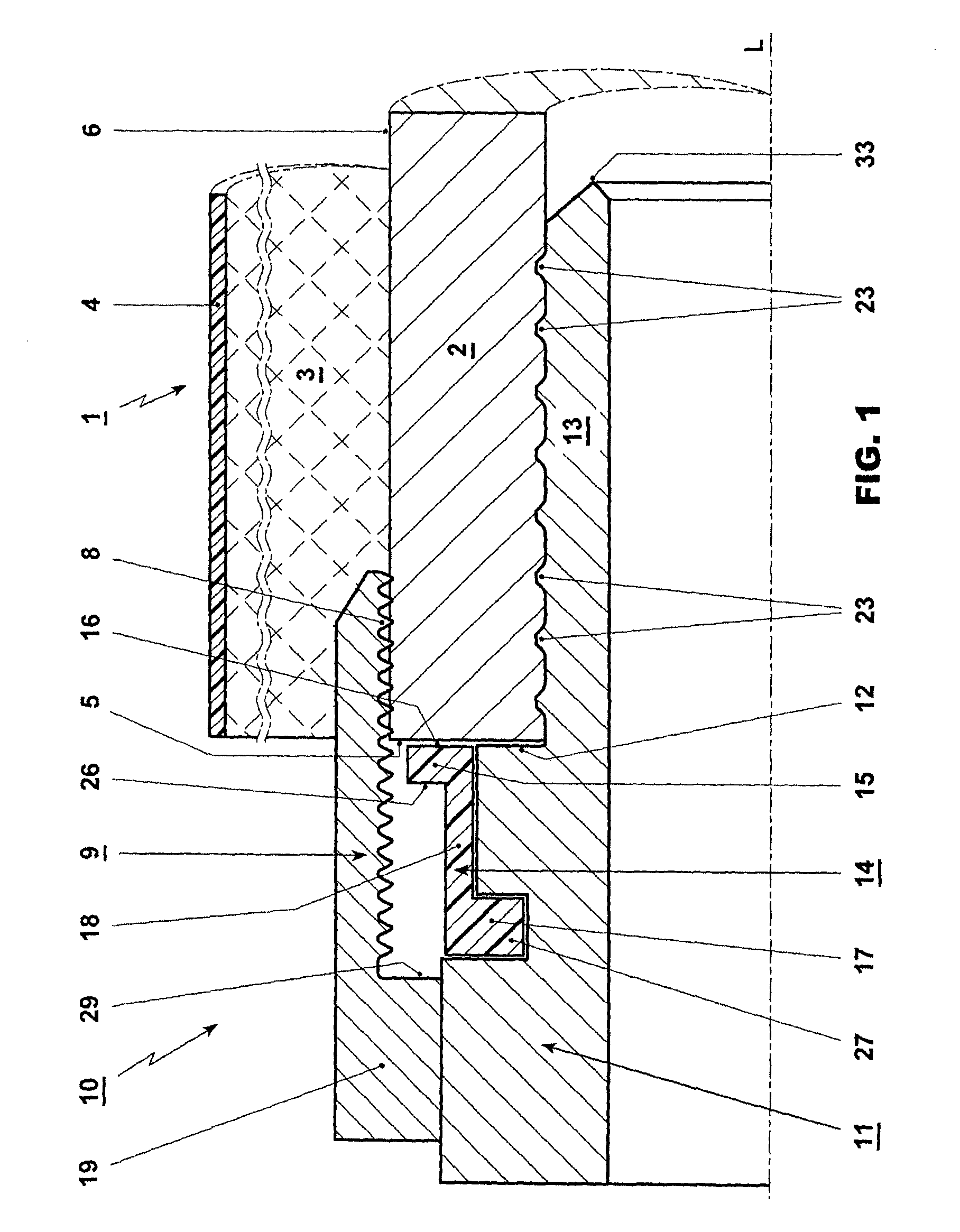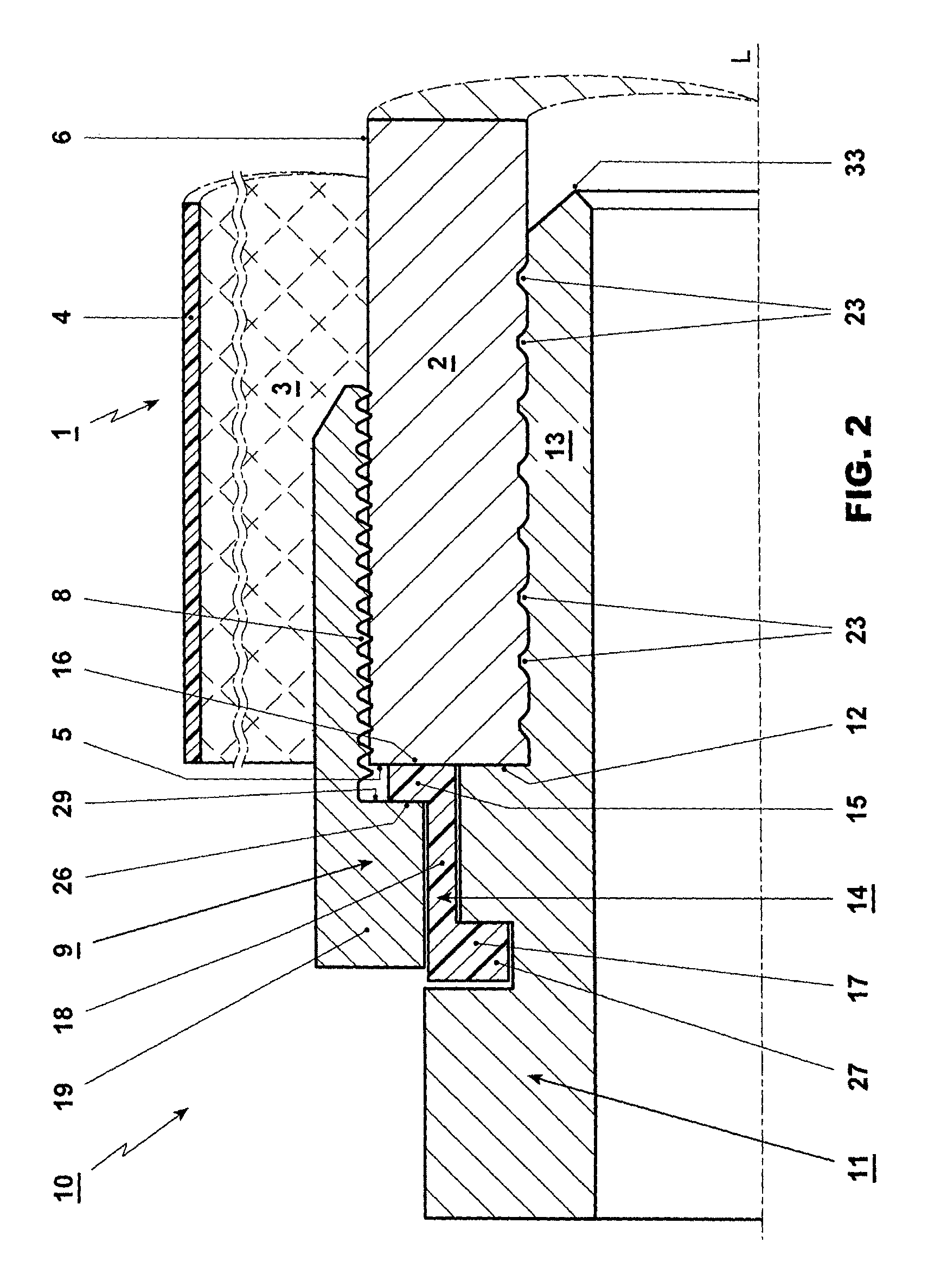Method for connecting connection piece to thermally insulated conduit pipe
a technology of thermal insulation and connection pieces, which is applied in the direction of thermal insulation, heat exchange apparatus, flexible pipes, etc., can solve the problems of not yielding optimal methods, and achieve the effects of uniform attachment of the connection piece, good sealing, and better adaptation to the position of the end fa
- Summary
- Abstract
- Description
- Claims
- Application Information
AI Technical Summary
Benefits of technology
Problems solved by technology
Method used
Image
Examples
Embodiment Construction
[0017]FIGS. 1 and 2 show a sectional representation through the end region of a conduit pipe, with the longitudinal axis L of the conduit pipe lying on the sectional plane. To simplify the figure, only a portion of the rotationally symmetrical conduit pipe and of the connection piece (which is substantially rotationally symmetrical in the connection area) are shown above the longitudinal axis L. The connection piece can have any known design or function as a pipe coupling or fitting or armature and be commensurately embodied with the conduit pipe outside of its depicted connection area. In particular, the connection piece can be embodied the same on another end as on the end shown. The conduit pipe has a thermal insulation (not shown in full thickness) that respectively encloses the internal pipe, and preferably an external casing. Particularly, the thermal insulation and the external casing are corrugated. Such a conduit pipe can particularly be embodied and manufactured according ...
PUM
| Property | Measurement | Unit |
|---|---|---|
| color | aaaaa | aaaaa |
| distances | aaaaa | aaaaa |
| thermally insulating | aaaaa | aaaaa |
Abstract
Description
Claims
Application Information
 Login to View More
Login to View More - R&D
- Intellectual Property
- Life Sciences
- Materials
- Tech Scout
- Unparalleled Data Quality
- Higher Quality Content
- 60% Fewer Hallucinations
Browse by: Latest US Patents, China's latest patents, Technical Efficacy Thesaurus, Application Domain, Technology Topic, Popular Technical Reports.
© 2025 PatSnap. All rights reserved.Legal|Privacy policy|Modern Slavery Act Transparency Statement|Sitemap|About US| Contact US: help@patsnap.com



